Making Data Scientists Productive in Azure

Doing data science today is far more difficult than it will be in the next 5-10 years. Sharing, collaborating on workflows in painful, pushing models into production is challenging. Let’s explore what Azure provides to ease Data Scientists’ pains.
This article is a part of my Azure Data Platform Landscape overview project.
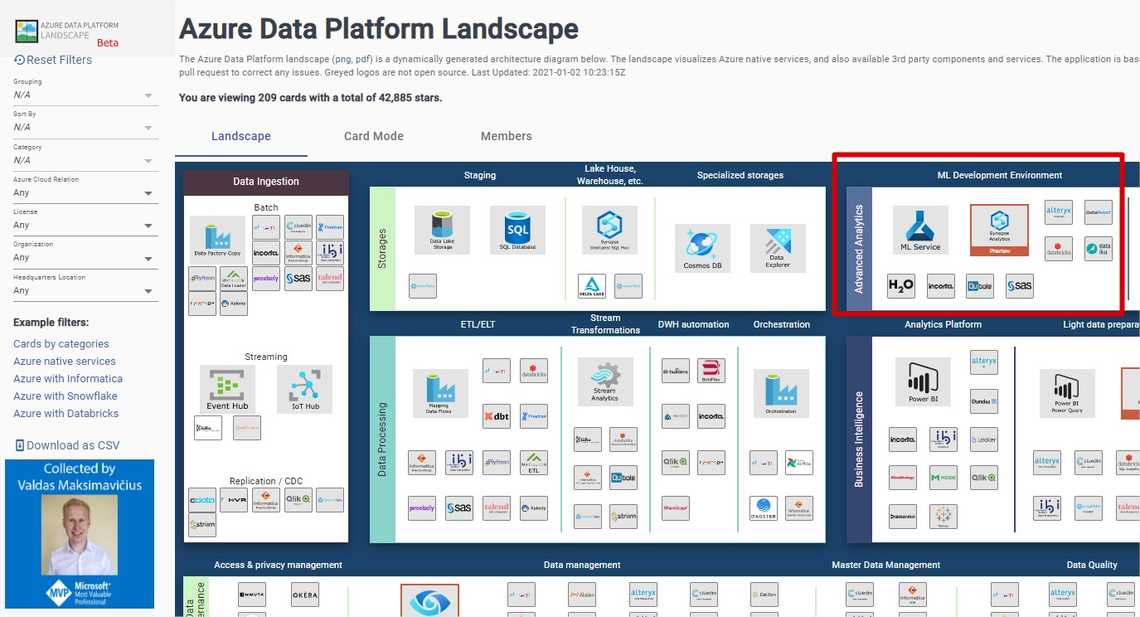
In this post, you will learn about Azure Machine Learning Studio, Azure Machine Learning, Azure Databricks, Data Science Virtual Machine, and Cognitive Services. What tools and services can we choose based on a problem definition, skillset or infrastructure requirements?
“One thing about Microsoft - they have many ways to solve the same problem”
Picking a good name for your classes, methods or variables is essential (and difficult). Finding a good name for a product or service seems to be even more challenging. When I look at the Azure service names (“machine learning” this, “machine learning” that), it is clear that even big companies, like Microsoft, have difficulties finding catchy and straightforward names.
As a result, there are many different services with similar names. For example, what is the difference between Azure Machine Learning Service and Azure Machine Learning Studio? Is Microsoft Machine Learning Server the same thing as Data Science Virtual Machine? Let’s find out!
Agenda:
- Azure Cognitive Services
- ML.NET
- Azure Machine Learning Studio
- Power BI Auto ML
- Azure Machine Learning
- Azure Synapse Analytics
- Azure Databricks
- Data Science Virtual Machine
- Microsoft Machine Learning Server
- SQL Server Machine Learning Services
What do I mean by saying “Making Data Scientists Productive in Azure”?
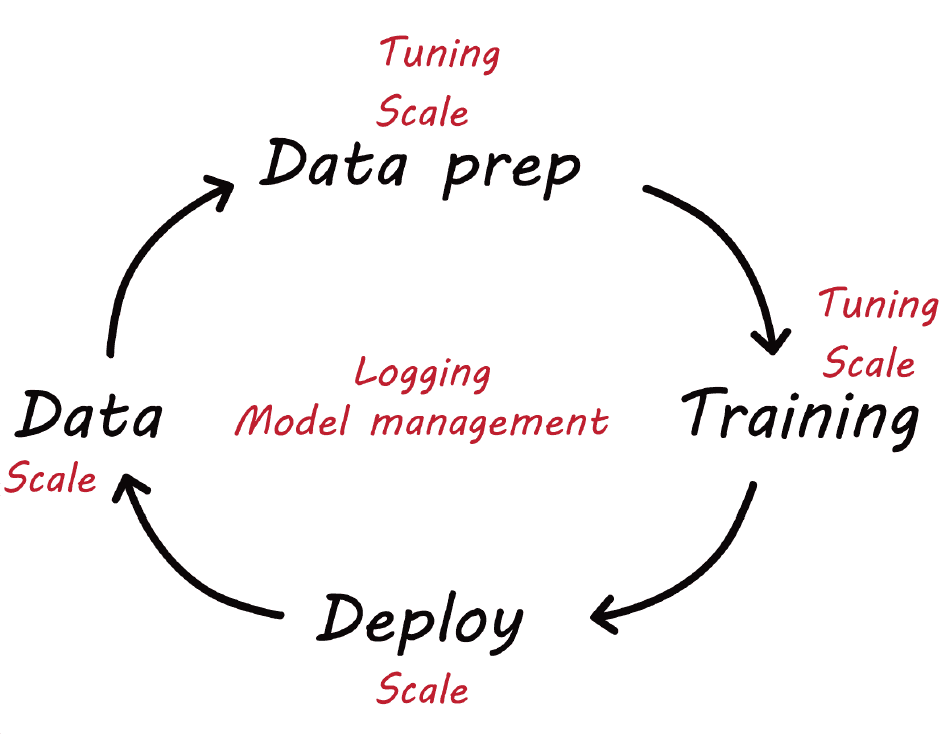
Matei Zaharia, the author of Spark, in one of his presentations pointed out the main aspects of the machine learning lifecycle.
In the underlying machine learning lifecycle, we start with data. Later, we run data preparation scripts, model training, and model deployment. Then, if our application is doing anything important, we want to monitor it to see how it’s doing, collect extra data and feed it back into this process again. Each step has many tools that often need tuning for better results and performance. Finding what parameters were used at each stage to get a specific result is essential to be able to experiment with all. Everything needs to happen at scale.
By “productive” in the title of this post, I mean a collection of well-integrated tools that support the whole machine learning lifecycle.
Azure Cognitive Services
What is it?
Azure services with pre-built AI and ML models
What can you do with it?
Add intelligent features to your apps
Azure Cognitive Services is a powerful capability that allows software developers (no machine learning knowledge required) use state of the art machine learning models and integrate with other applications by calling APIs or importing SDKs.
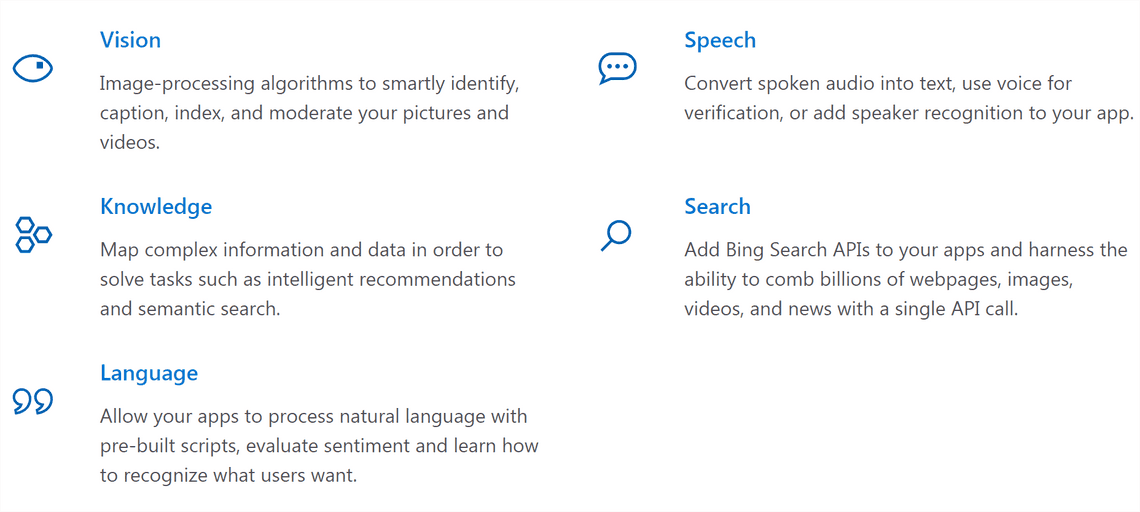
Azure Cognitive Services lets to build apps with powerful algorithms using a few lines of code, run across devices and platforms such as iOS, Android, and Windows. Cognitive Services continually expands with new features. Many services offer free demos.
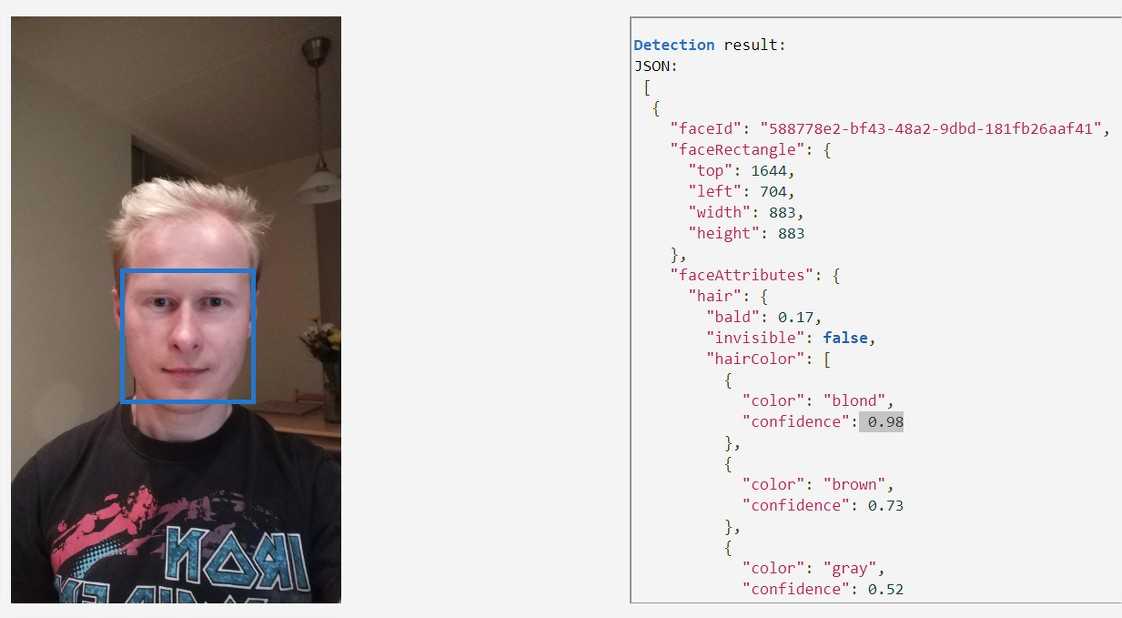
For example, here is a face detection API returning my face parameters. You find attributes like hair color, smile, gender. But the first property is BALD: 0.17! By the way, increased by 4 percentage points since the last year :)
Azure Cognitive Services - Summary
Key benefits:
- Minimal development effort
- Easy integration via HTTP REST
- Built-in integrations with other Azure services
- Containers support
- Azure Virtual Network for enhanced data security
Considerations:
- Limited customization allowed
- Limited support for less popular languages, e.g. Lithuanian, Estonian, etc.
ML NET
What is it?
An open-source and cross-platform ML framework
What can you do with it?
Create custom ML models using C# or F# without leaving the .NET ecosystem

ML.NET - Summary
Key benefits:
- High performance
- AutoML functionality
- Leverage TensorFlow or ONNX
- Expose a model via an ASP.NET Core Web API
- Integrate with Spark via .NET for Apache Spark (preview)
- Use ML.NET in Jupyter Notebooks (preview)
Considerations:
- Limited support for popular ML libraries (e.g. Scikit-learn, NumPy)
Azure Machine Learning Studio
What is it?
Drag-and-drop visual interface for ML
What can you do with it?
Build, experiment and deploy models using pre-configured algorithms
Azure Machine Learning Studio (ML Studio) is a collaborative, drag-and-drop visual workspace where you can build, test, and deploy machine learning solutions without needing to write code. It uses pre-built and pre-configured machine learning algorithms and data-handling modules. Business analysts/statisticians without R/Python knowledge would be productive with this tool.
Azure Machine Learning Studio is an impressive service, that can make people productive quickly.|
Use ML Studio when you want to experiment with machine learning models quickly and easily, and the built-in machine learning algorithms are enough for your solutions.
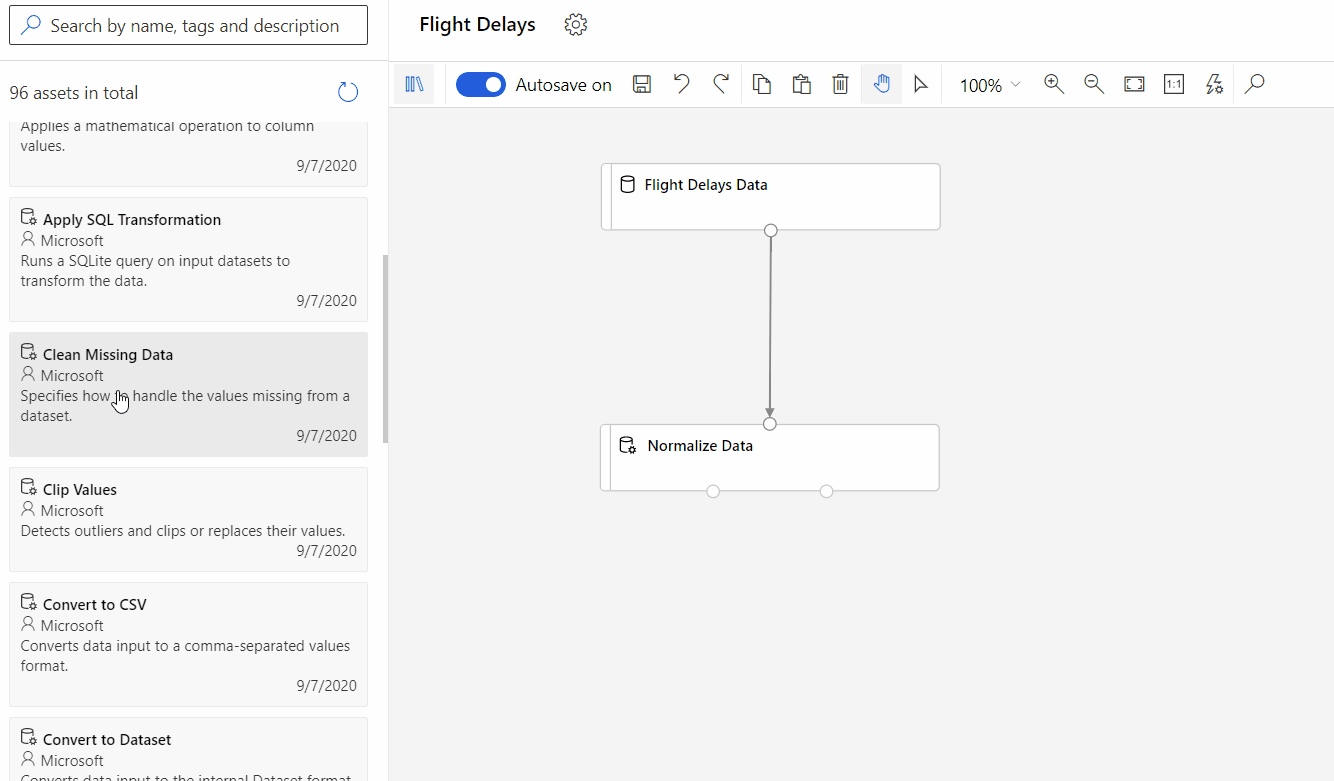
The whole experiment looks like a graph, with inputs at the top and outputs (predictions) at the bottom. In the example above, “Binary Classification: Direct marketing”, I compare two algorithms (two-class boosted decision tree and two-class support vector machine), and the tool makes it easy to deploy a better performing model as a web service.
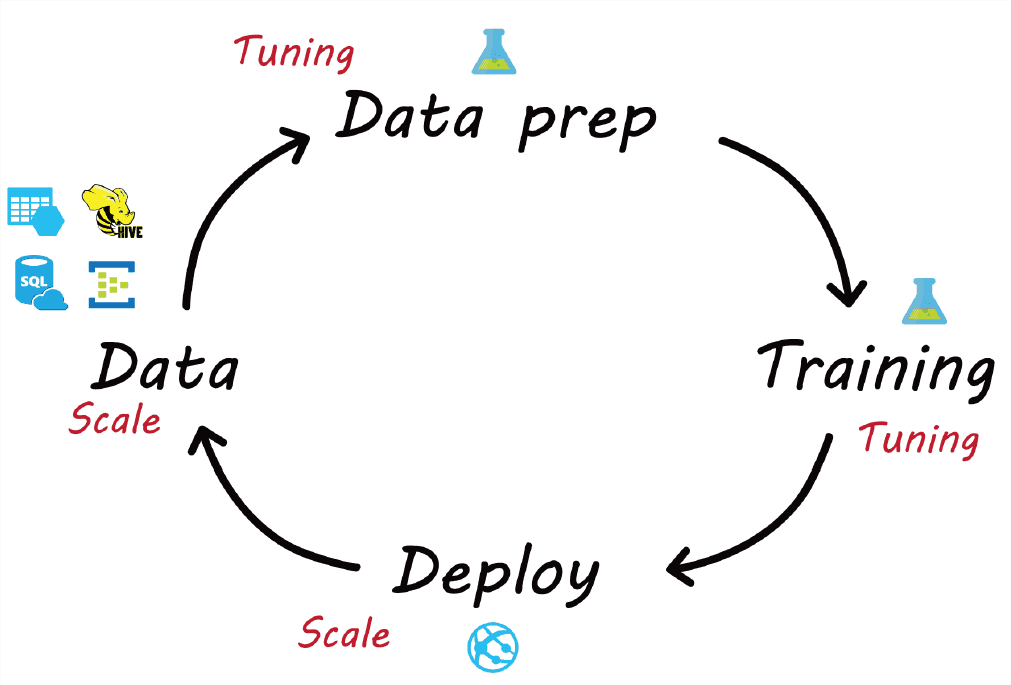
Azure Machine Learning Studio - Summary
Key benefits:
- Interactive visual interface
- Built-in Jupyter Notebooks for data exploration
- Direct deployment of trained models as web services
- Built-in integrations with other Azure services
Considerations:
- Online only
- Limited number of supported input and output connectors
- Limited support for custom Python/R code
Power BI Auto ML
What is it?
Auto Machine Learning component built into Power BI to build ML models without any code
What can you do with it?
Using AutoML in Power BI, business analysts without a strong background in machine learning can build ML models.
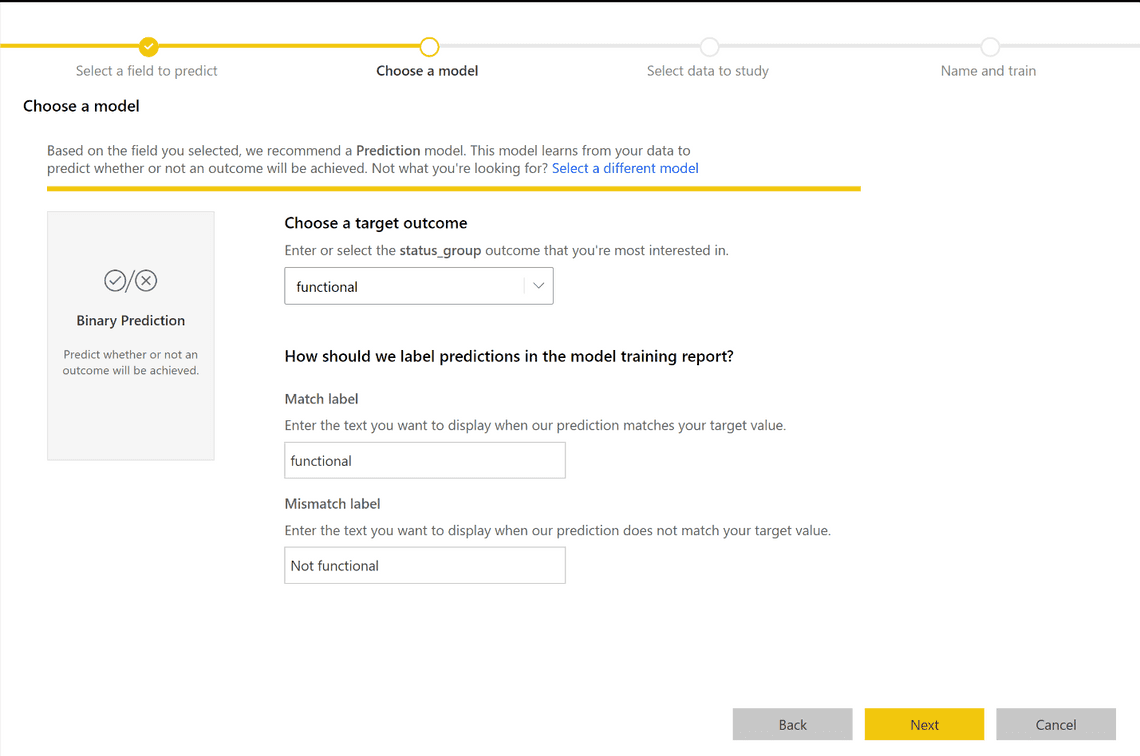

Power BI Auto Machine Learning - Summary
Key benefits:
- Use Power BI dataflows to load data, transform it and build models on top of it
- Deploy models as services via Azure ML
- Get top predictors during training and explanations for each prediction
Considerations:
- Limited selection of algorithms (binary prediction, general classification, regression)
- Paid Pro or Premium license needed
Azure Machine Learning
What is it?
Managed cloud service for ML
What can you do with it?
Train, deploy and manage models in Azure
First of all, be aware that we discuss now Azure Machine Learning, NOT STUDIO (presented earlier).
Azure Machine Learning (Azure ML) provides a cloud-based environment you can use to develop, train, test, deploy, manage, and track machine learning models. It supports open-source technologies so that you can use Python open-source packages with machine learning components.
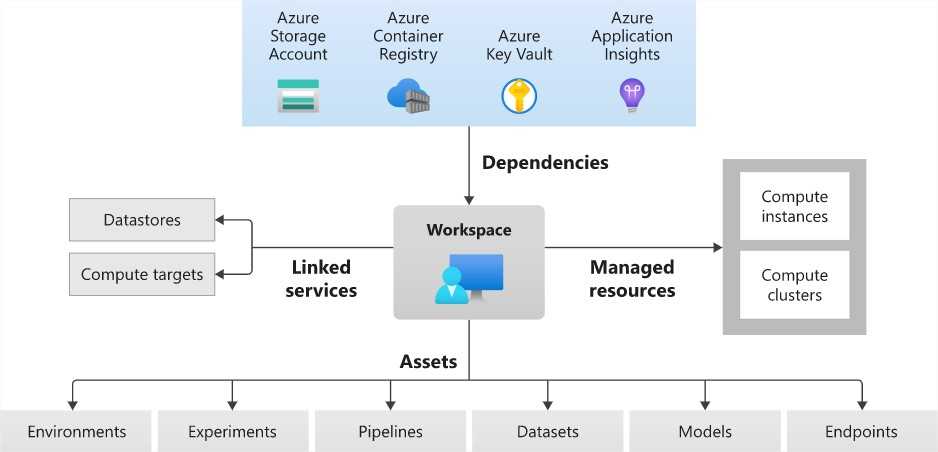
By using Azure ML, you can start training on your local machine and then scale out to the cloud. With many available compute targets, and with advanced hyperparameter tuning services, you can build better models faster by using the power of the cloud.
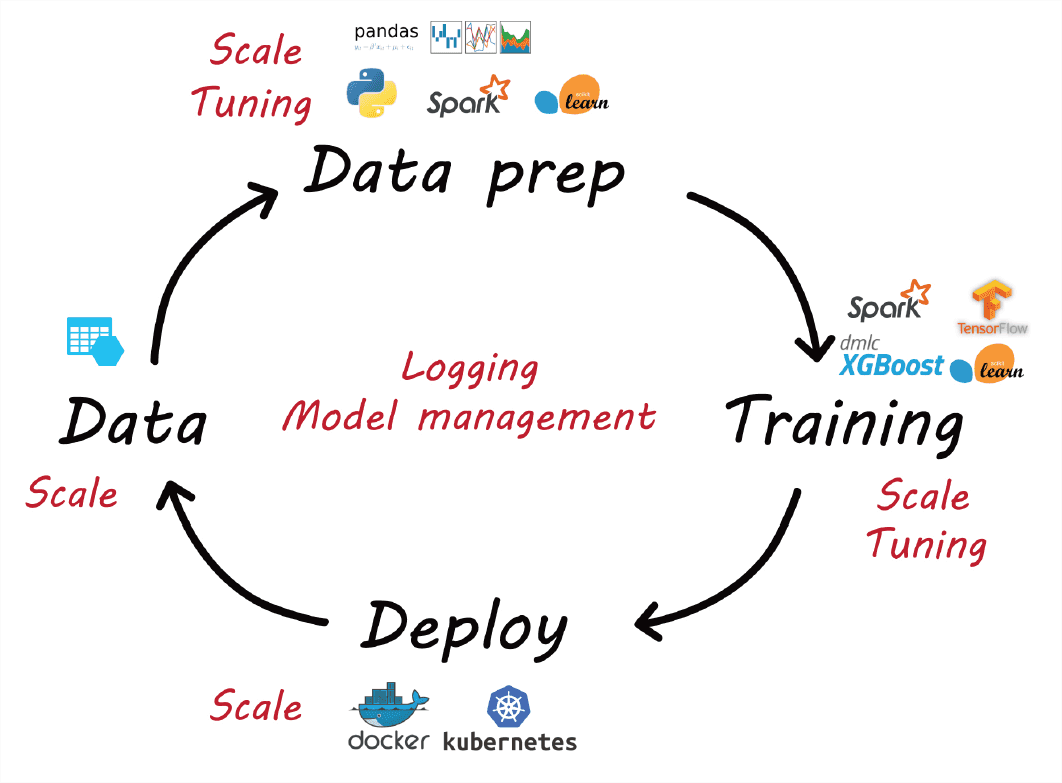
Azure ML supports the whole cycle, from data ingestion to deployment using Docker containers. Data should be available in Azure Blob Storage. For data preparation and training you can use any Python open-source package. For deployment, the easiest setup is achievable with Azure Container Instances or Azure Kubernetes Service.
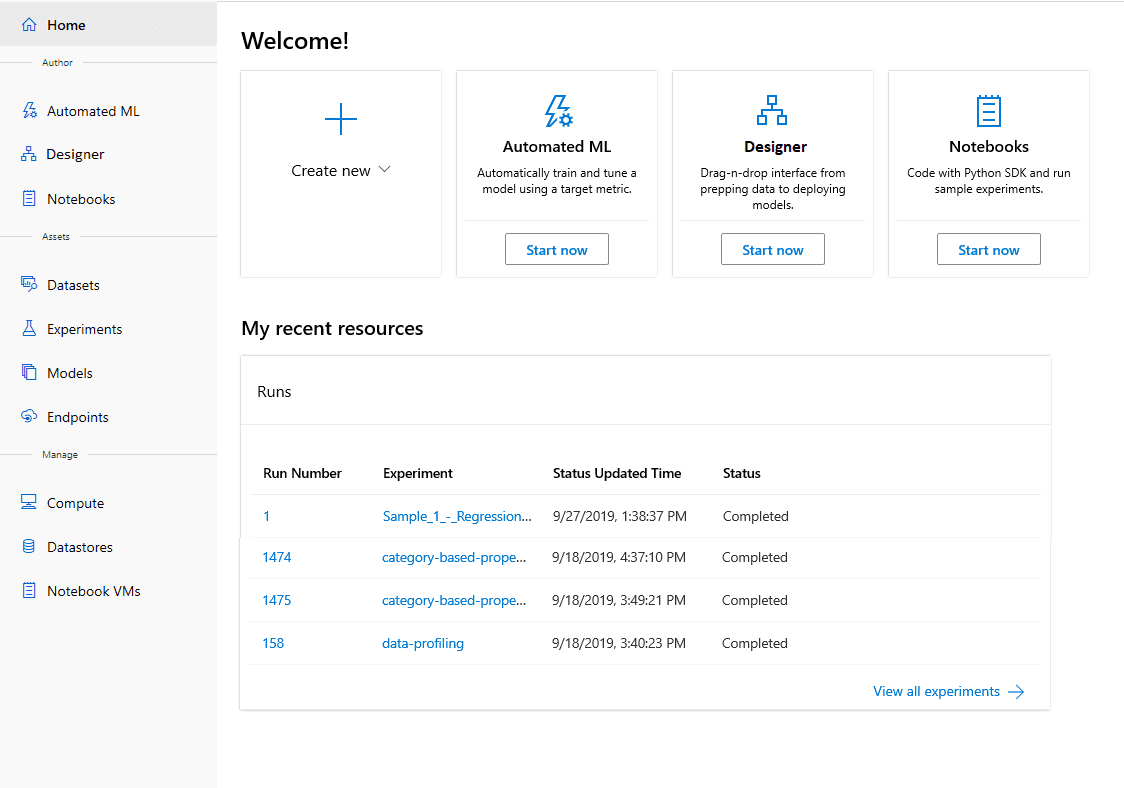
Azure Machine Learning - Summary
Key benefits:
- Native integration with Azure Synapse Analytics
- Central management of scripts and run history
- Run model training scripts locally (offline), and then scale out to the cloud
- Management and deployment of models to the cloud or edge devices
- Integration with Azure DevOps
Considerations:
- Investigate MLflow to track metrics and manage models
Azure Synapse Analytics
What is it?
A limitless analytics service that brings together enterprise data warehousing and Big Data analytics
What can you do with it?
Query query, build pipelines, develop reports and dashboards, use notebooks, and create machine learning models.
At a high level, Azure Synapse Analytics helps with:
- (Business understanding)
- Data acquisition and understanding
- Modeling
- Model deployment and scoring
You can enrich your data in Spark tables with new machine learning models that you train by using automated machine learning. In Azure Synapse Analytics, you can select a Spark table in the workspace to use as a training dataset for building machine learning models, and you can do this in a code-free experience

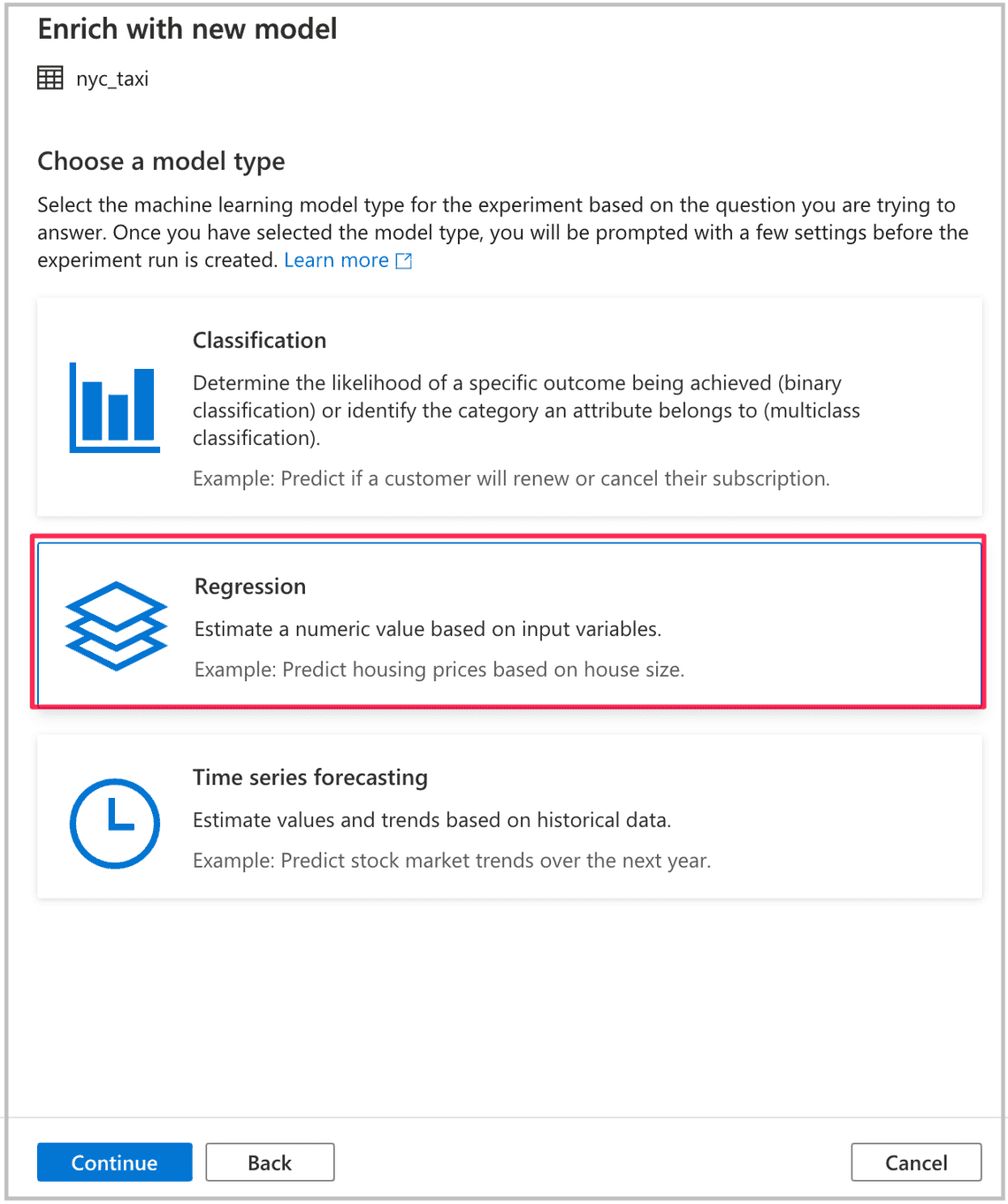
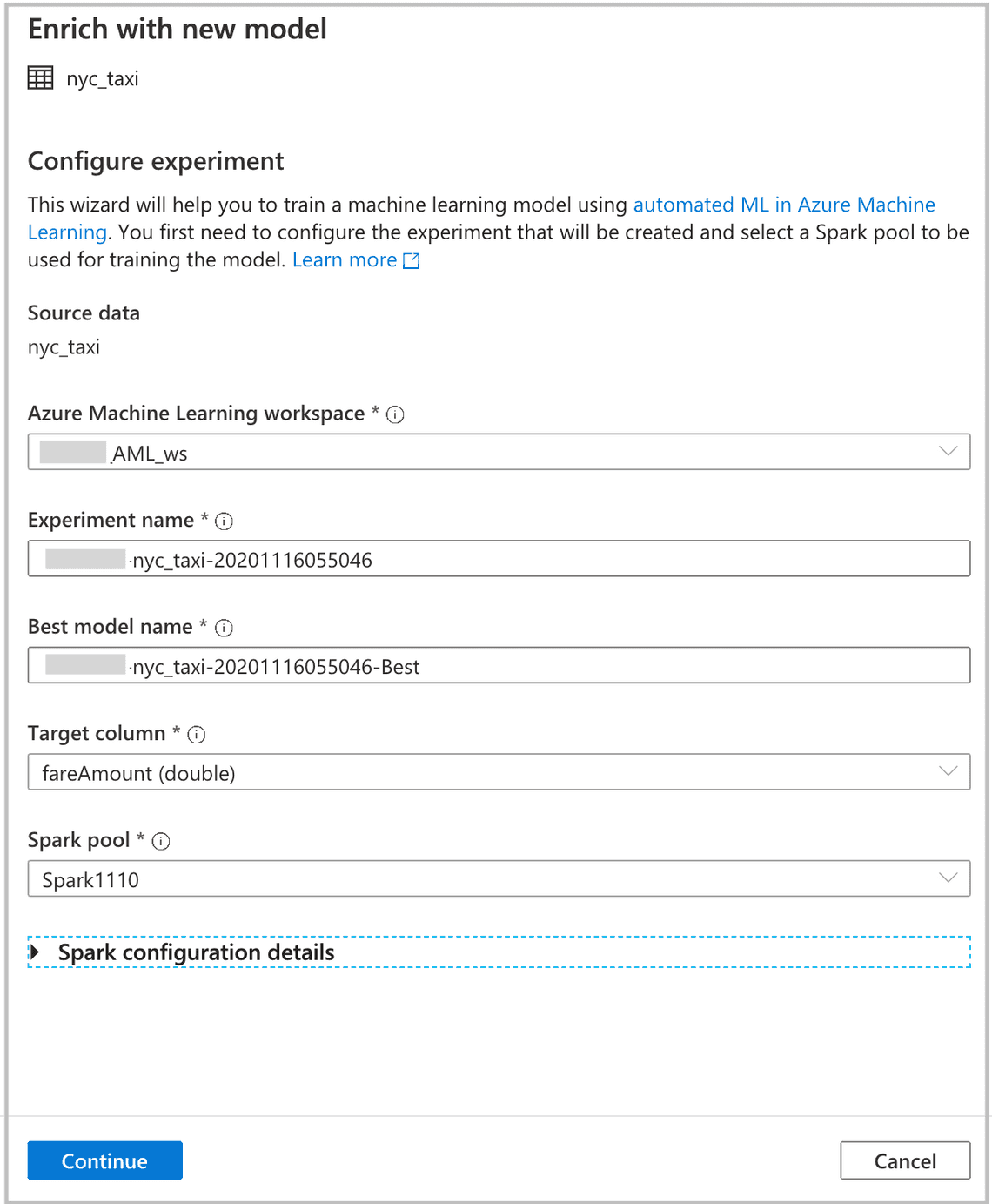
Another option allows you to enrich your data in Azure Synapse Analytics with Azure Cognitive Services
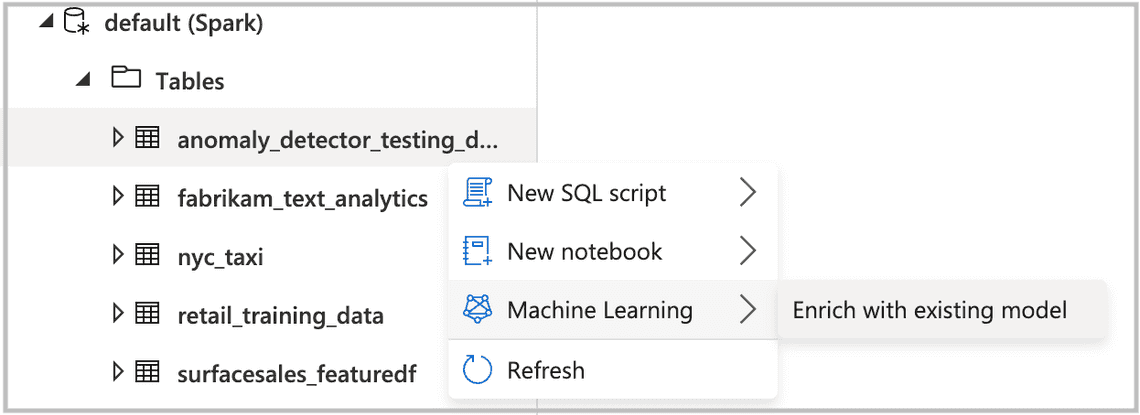
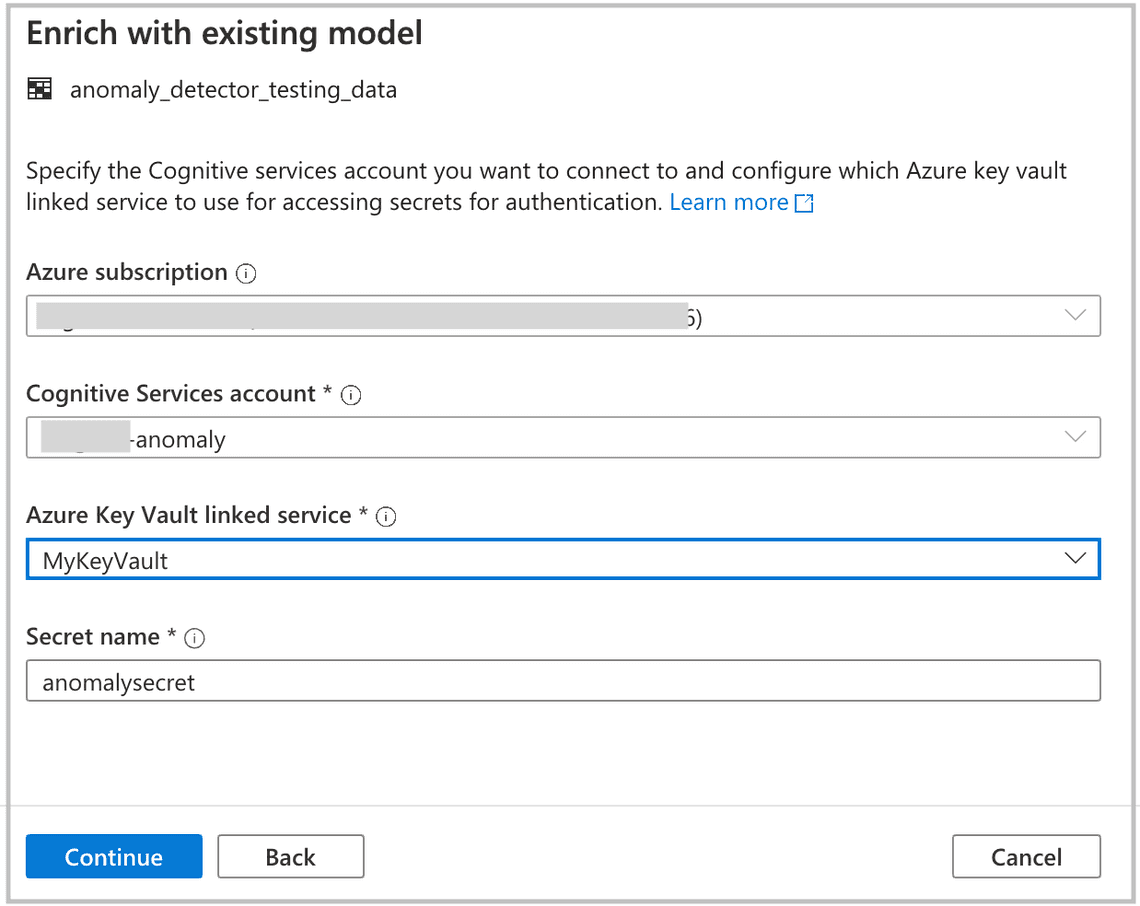
Azure Synapse Analytics - Summary
Key benefits:
- Unified platform for various personas and different workloads
- Native integration with Azure Machine Learning
- Native integration with Azure Cognitive Services
Considerations:
- Limited Python and Spark capabilities compared to Azure Databricks
Azure Databricks
What is it?
Spark-based analytics platform
What can you do with it?
Build and deploy models and data workflows
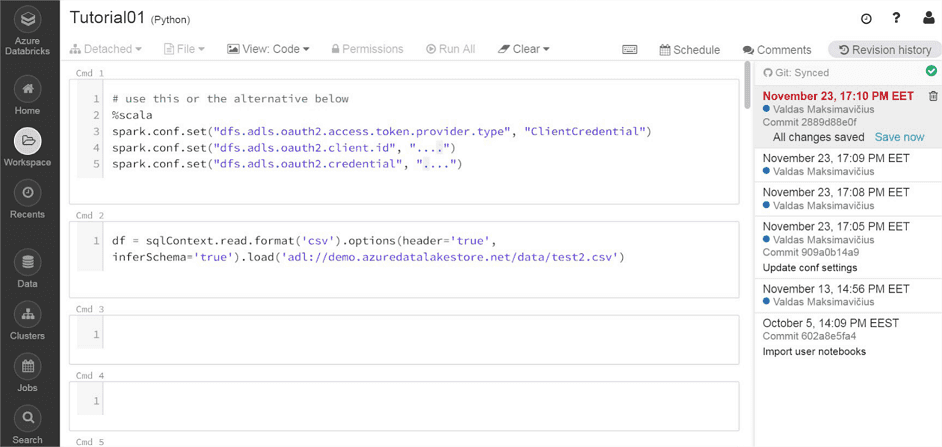
Databricks provides a managed cloud platform built around Spark that delivers 1) fully managed Spark clusters, 2) an interactive workspace for exploration and visualization, 3) a production pipeline scheduler, and 4) a platform for powering your Spark-based applications
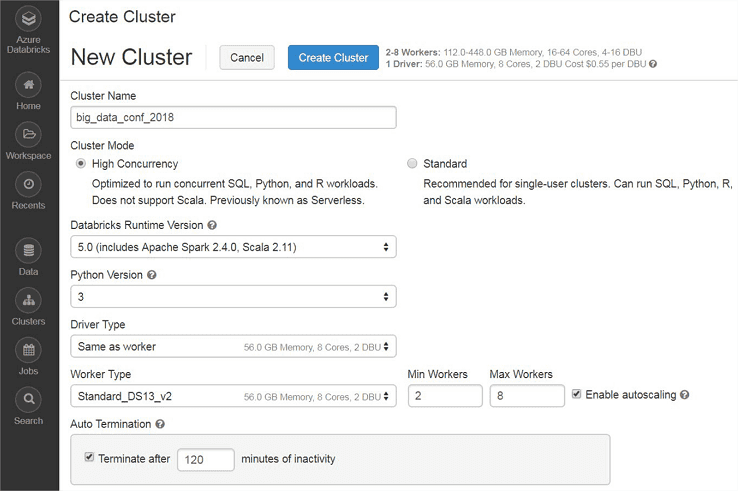
The main concepts:
- Databricks Runtime (Apache Spark, concurrent clusters, REST APIs, libraries)
- Collaborative workspace (notebooks, user access, git integration)
- Deploy Jobs & Workflows (job scheduler, notifications & logs, multi-stage pipelines)
- Security (single sign-on (SSO), access control list (ACL), secrets via Azure Key Vault)
- DeltaLake for data storage metamodel
- MLFlow for ML model management
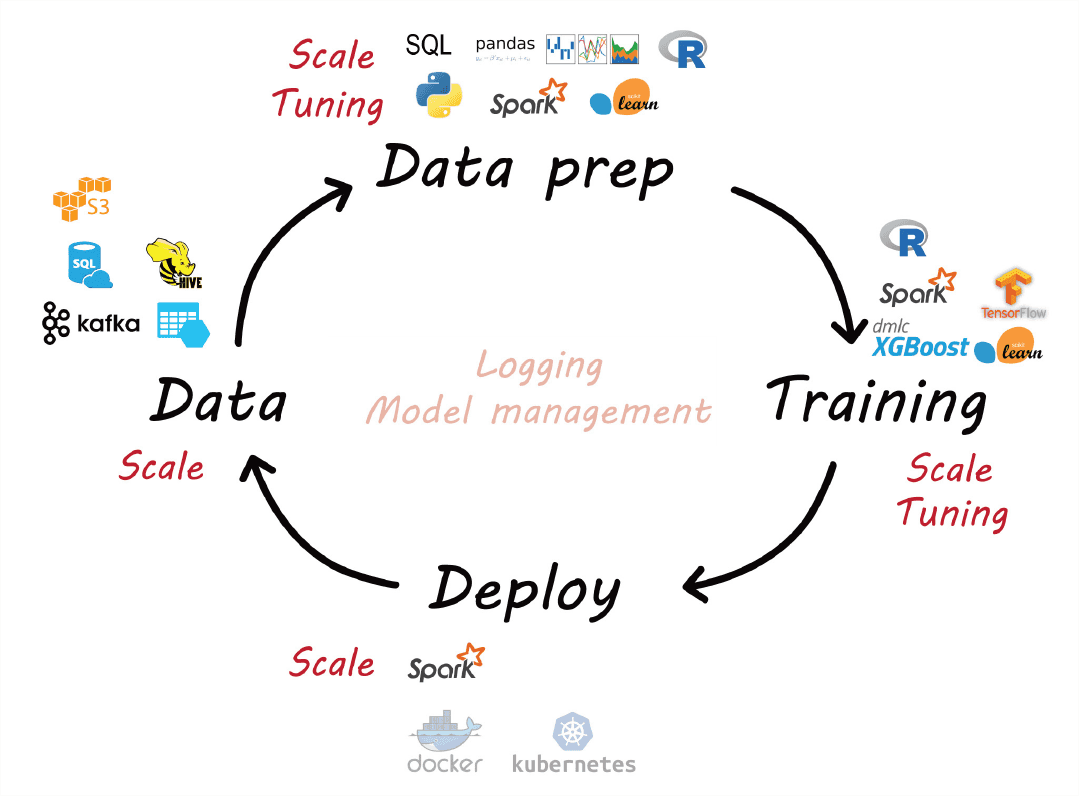
Azure Databricks, with the help of extra libraries and services, supports the complete machine learning cycle.
Azure Databricks - Summary
Key benefits:
- The most mature development environment for ML on the Azure platform
- Seamless integration with MLflow & Azure ML
- Integrated with other Azure services (e.g., Azure Data Factory, Azure Key Vault)
- Delta Lake support
Considerations:
- Online only
- Cost includes the price of virtual machines and Databricks fee
Data Science Virtual Machine
What is it?
An Azure virtual machine with pre-installed data science tools
What can you do with it?
Develop ML solutions in a pre-configured environment
Data Science Virtual Machine (DSVM) is a pre-installed and pre-configured set of images for Windows or Linux virtual machines. DSVM includes the most popular data science tools. Since it has access to the full potential of Azure networking and scalability, DSVM can be a great environment even for data science teams.

Data Science Virtual Machine can be useful for learning and comparing different machine learning tools.
Data Science Virtual Machine - Summary
Key benefits:
- The most complete development environment for ML on the Azure platform
- Reduced time to install, manage, and troubleshoot data science tools and frameworks
- Included the latest versions of all commonly used tools and frameworks
- Virtual machine options include scalable GPU images
Considerations:
- Online only
- Infrastructure as a service (IaaS), not a managed data science solution

If you can’t use Azure, then I suggest you look into Microsoft Machine Learning Server and SQL Server Machine Learning Services.
Microsoft Machine Learning Server
What is it?
Cross-platform standalone server for predictive analysis
What can you do with it?
Build and deploy models written in R or Python
In September 2017, Microsoft R Server was released under the new name of Microsoft Machine Learning Server (because of added Python support). Microsoft Machine Learning Server (ML Server) is a flexible choice for analyzing data at scale, building intelligent apps, and discovering insights. It includes a collection of R packages, Python packages, interpreters, and infrastructure for developing and deploying distributed R and Python-based machine learning solutions on a range of platforms across on-premises and cloud.
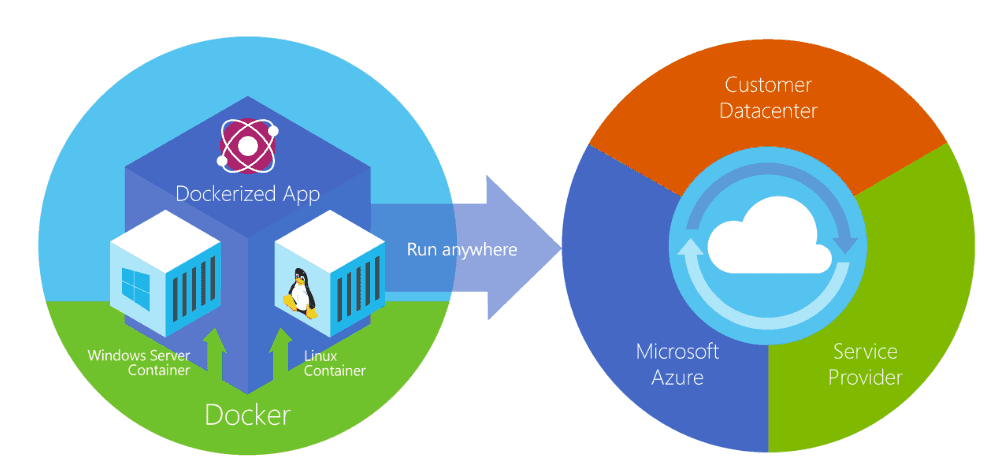
ML Server offers best-in-class operationalization - from the time a machine learning model is completed, it takes just a few clicks to generate web services APIs. These web services are hosted on a server grid on-premises or in the cloud and can be integrated with line-of-business applications. Additionally, ML Server integrates seamlessly with Active Directory and Azure Active Directory and includes role-based access control to satisfy security and compliance needs of your enterprise.
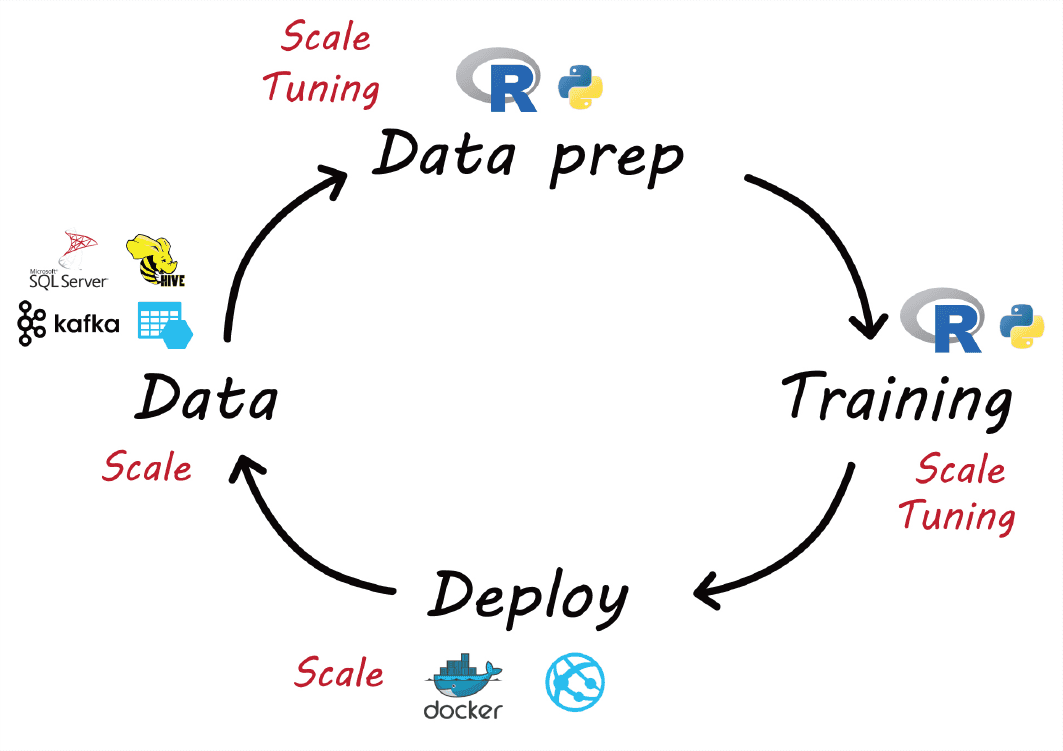
ML Server has full support for the data science lifecycle of R and Python-based analytics.
Microsoft Machine Learning Server - Summary
Key benefits:
- Built on a legacy of Microsoft R Server and Revolution R Enterprise
- Advanced security options
- Deploy R and Python models as web services
Considerations:
- You need to deploy and manage Machine Learning Server in your enterprise
SQL Server Machine Learning Services
What is it?
A built-in SQL Server feature to support machine learning
What can you do with it?
Execute Python and R scripts with relational data
SQL Server Machine Learning Services - Summary
Key benefits:
- Run your scripts where the data resides and eliminate transfer of the data across the network to another server
- Encapsulate predictive logic in a database function or as a library
- Use base distributions of Python, R, and Java (extensibility framework)
Considerations:
- Assumes a SQL Server database as the data tier for your application
- Limited scalability
- A long list of known issues
Summary
Overall, it seems that Azure Machine Learning service is expanding really fast and offers amazing Data Science capabilities. Azure Databricks provides amazing data engineering capabilities.
Share
Related Posts
Other projects

